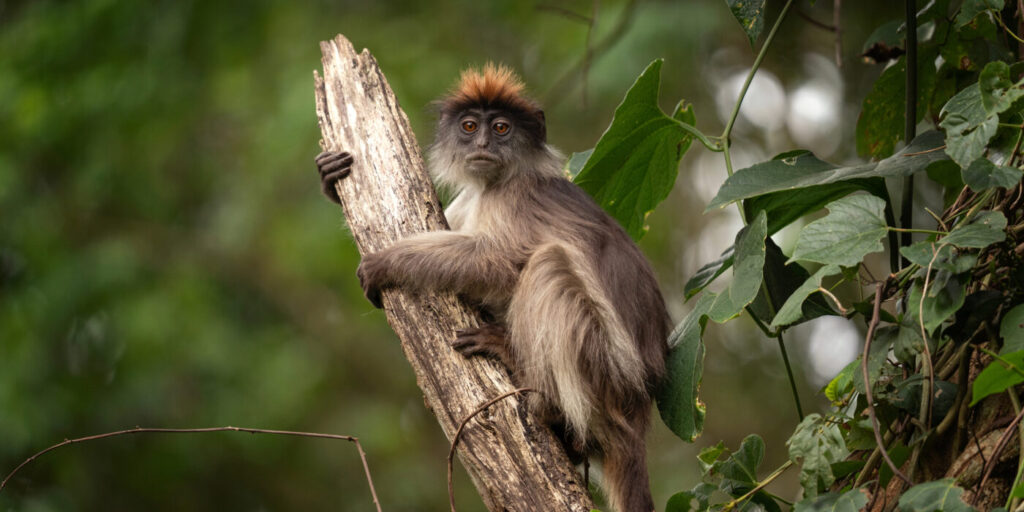Red colobus monkeys are the most threatened group of African monkeys. With a grant from the National Institutes of Health (NIH), a WashU team will model viral transmission dynamics among red colobus monkeys and their human neighbors in Uganda.
Red colobus monkeys can’t seem to get a break. Since 2007, when anthropologist Krista Milich at Washington University in St. Louis established her project at Kibale National Park in Uganda, she has watched their numbers decline. Red colobus are now considered the most threatened group of African monkeys.
According to the IUCN Red List of Threatened Species, every form of red colobus monkey is threatened with extinction. “Kibale has the largest, most viable population of this red colobus species,” said Milich, an assistant professor of biological anthropology in Arts & Sciences. “There are very few living outside of that protected area.”
The monkeys face many pressures, with habitat degradation chief among them. But red colobus are also vulnerable to viruses, including those that spread from animal to animal, and even from humans to other animals.
Milich and her Washington University colleagues Michael Landis, an assistant professor of biology in Arts & Sciences, and David Wang, a professor of microbiology and of pathology and immunology at the School of Medicine, recently won a five-year grant from the National Institutes of Health (NIH) to model viral transmission dynamics among red colobus monkeys and their human neighbors near Kibale National Park. The team received $540,000 for the first year of their five-year project; the total project budget exceeds $2.5 million. Innocent Rwego, a senior lecturer of veterinary medicine at Makerere University in Uganda — a WashU McDonnell International Scholars Academy partner — is a partner on this effort.
The NIH award represents some of the first external funding for a team that came together in 2022 as part of the Incubator for Transdisciplinary Futures, a signature initiative of the Arts & Sciences strategic plan. Their research cluster, “The Human-Wildlife Interface,” is focused on identifying the scenarios likely to promote infectious diseases within and between many different types of animal species, including but not limited to interactions between red colobus monkeys and humans.
The new work will tap into Milich’s existing, long-running research program at Kibale, under which members of her project team follow and observe troops of red colobus monkeys living in areas of the forest with different degrees of human-caused disturbance.
